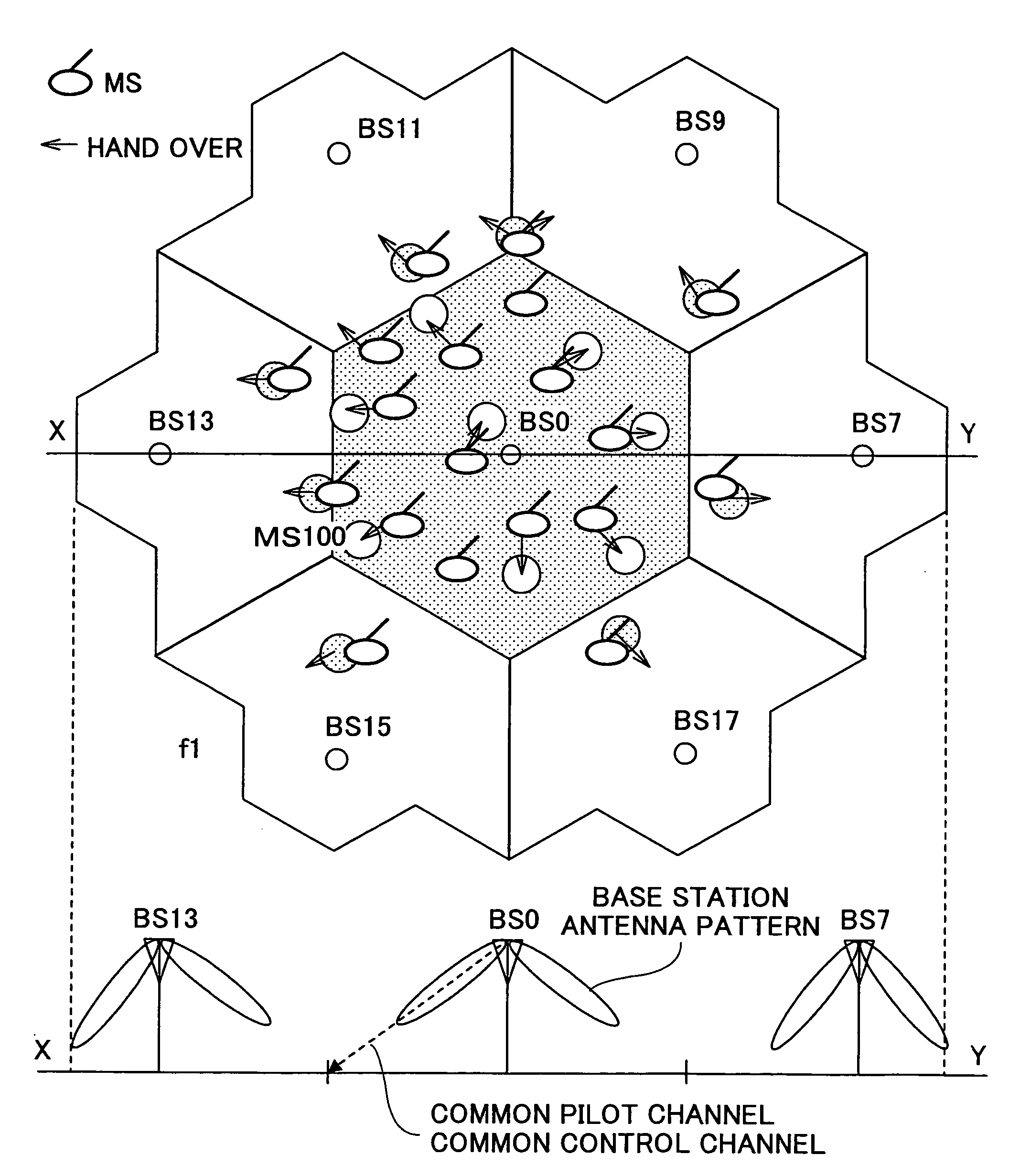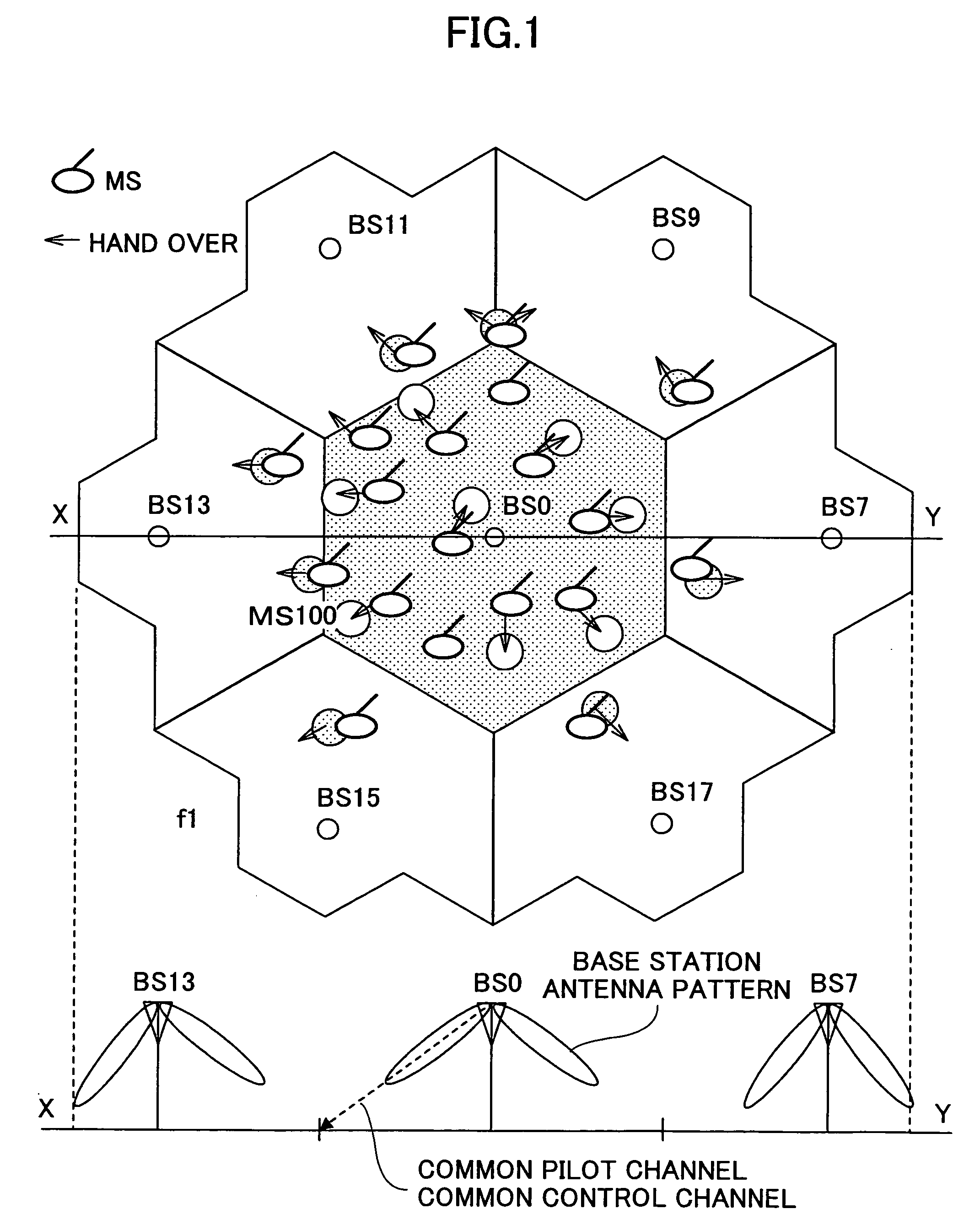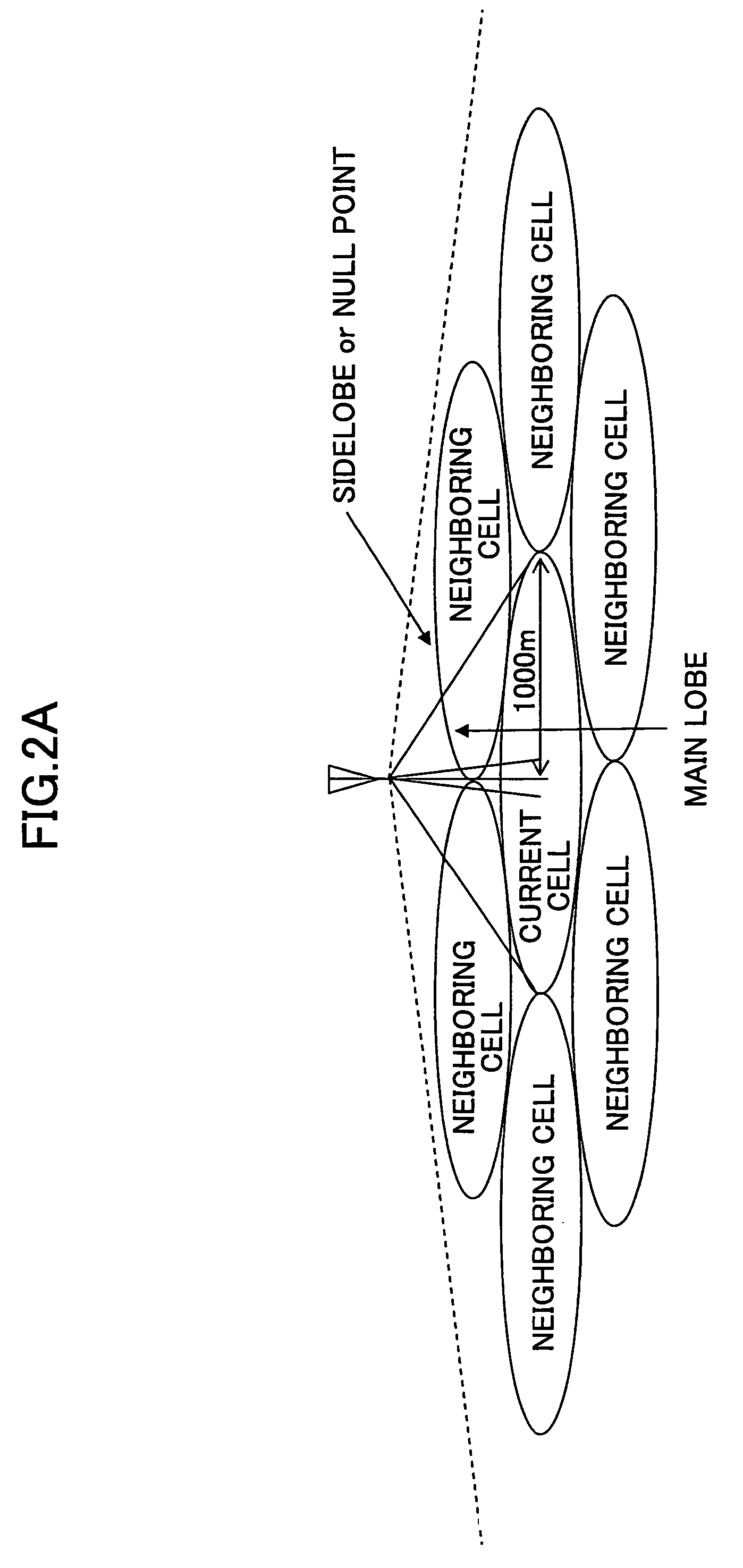However, even in a system using
narrow band signals where
crosstalk immediately leads to
communication quality degradation and disconnection, if the service area is divided into plural cells using low position antennas and low power transmitters to realize a cellular mobile communication system, frequencies may be repetitively used within the service area without causing
crosstalk.
The interference from other channels includes interference from the cell transmitting the channel to be demodulated and interference from cells other than the cell transmitting the channel to be demodulated.
This in turn leads to further increase in the interference
noise power.
Therefore, in the downlink, transmission powers reach the upper limit starting from channels established with respect to mobile stations with relatively large propagation loss from the base station so that adequate
communication quality may not be obtained.
As a result, channels in communication may be forcedly disconnected, and adequate transmission power may not be assigned to a channel newly established with respect to a
mobile station with which communication is desired.
Also, in the uplink, transmission powers to be assigned to channels reach the upper limit starting from mobile stations with large propagation loss from the base station so that adequate communication quality may not be obtained.
As a result, channels in communication may be forcedly disconnected, and a connection request of a mobile station with which communication is desired may not reach the base station with adequate communication quality.
Even if limits are not imposed on the maximum transmission powers of the base station and the mobile station, it is theoretically impossible to accommodate a number of simultaneous communication channels exceeding the pole capacity.
Also, in a case where a service area is not divided into cells, the overall
system capacity of the service area is limited to be less than or equal to the pole capacity per cell regardless of the size of the service area.
Also, in the case where the service area is not divided into cells, the
system capacity of the entire service area is further limited by the transmission power of the
transmitter.
However, it is noted that by dividing the service area into cells, interference may be generated from other cells due to the use of the same frequency band by plural adjacent cells.
In a system that uses
wide band signals, interference from other cells such as adjacent cells and neighboring cells using the same frequency band may leak into the
current cell.
On the other hand, the required
antenna gain may not be secured in the
main lobe direction (normally cell boarder).
Also, when the tilt angle of the antenna vertical pattern in the base station is small, the orientation direction of the main lobe becomes close to horizontal so that the
antenna gain is increased with respect areas other than the area administered by the relevant base station (other cells) so that interference applied to the other cells is increased and interference from mobile stations residing within the other cells is increased.
In such smaller cells, it is quite difficult to manually design appropriate beam tilting or beam directing by simulating and estimating the
wave propagation between locations and base stations or actually taking measurements of locations within the service area with a measuring device according to the
cell design systems disclosed in the above cited documents.
In this case, it is difficult to accurately estimate the
wave propagation within the area based on a propagation
estimation formula defined for each of generalized city structures.
In other words, it is difficult to accurately design beam tilting and beam directing using a
cell design system.
However, an
electronic map cannot completely describe the actual environment such as detailed features of buildings, and information of the
electronic map cannot represent the actual environment in real time since the actual environment is subject to change over time.
Therefore, estimations based on the
electronic map may not be adequately accurate.
Also, in a system that designs beam tilting and beam directing based on actual measurements obtained using a measuring device, accurate beam tilting and beam directing may not be designed unless a large portion of the service area (e.g., roads, squares) has to be measured in detail owing to the complexity of the area configuration.
Further, the number of base stations to be stationed may be significantly increased in accordance with the reduction in size of the cells, and in turn, design procedures to be executed by the cell designer for designing beam tilting and beam directing may be increased and more complicated.
 Login to View More
Login to View More  Login to View More
Login to View More 


